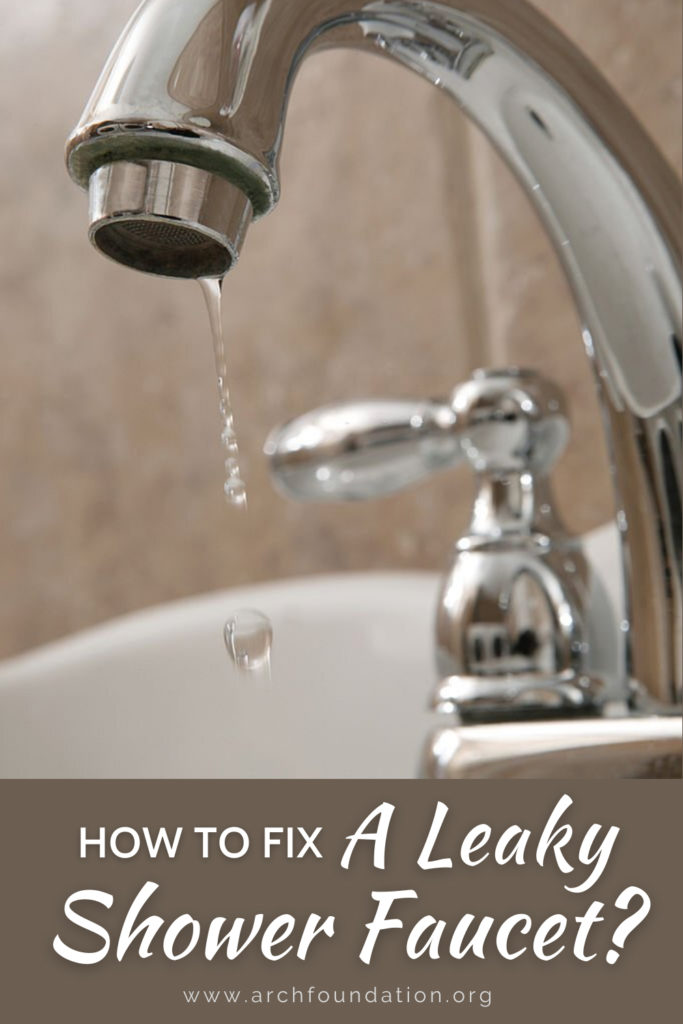How To Fix A Leaky Shower Faucet?
The idea of learning how to fix a leaky shower faucet myself crossed my mind entirely by chance. That day, I called in my local plumber to help me check out the leaks, but it took him forever to show up.
Thereby, I did my research and picked up the tool. Fortunately, it was a roaring success. After the first attempt, the annoying dripping has disappeared. I did not expect the job to be that effortless!
And indeed, I have to share with you the key to my success. In this post, you will learn about the roots of the issue, plus detailed instructions on how to repair a faucet that won’t stop dripping. I won’t keep you around any longer – let’s go!
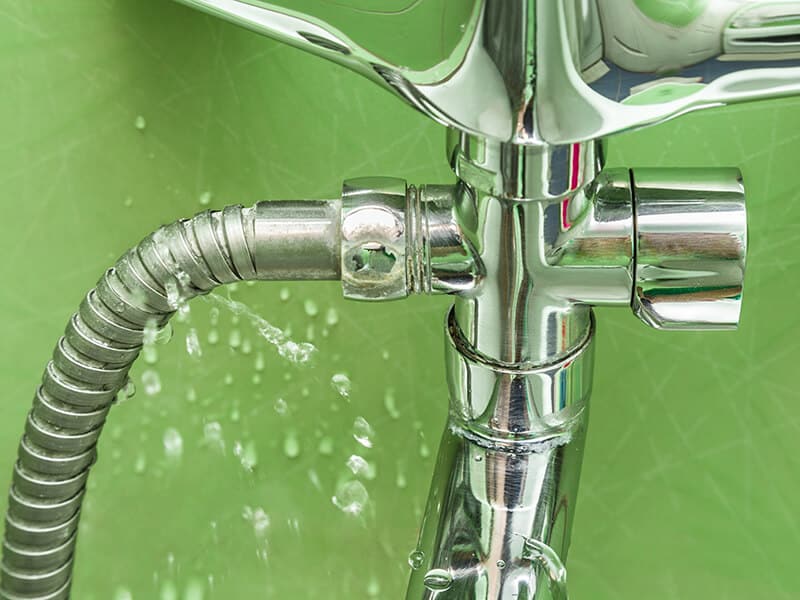
General Guide On How To Repair A Leaky Shower Faucet
There are many reasons that lead to a leaky shower faucet, but generally, all you have to do is swap its cartridge with a new one. The general guide on how to fix a leaky shower faucet includes the following steps:
- Turn off the water supply
- Remove the handle and faceplate
- Remove the locking clip
- Replace the cartridge
- Reassemble the parts
Sounds pretty easy, right? I’m positive that you will succeed on your first try. Before you start the handy work, let’s find out what causes your faucet to drip.
Why Does It Keep Dripping?
I’ve been there. It is really frustrating to have a leaky faucet. Not only does your water bill increase drastically, but it’s also a nuisance to see the water dripping relentlessly, leaving stains on the floor.
Most people pin the blame on the piping system, and if you think the same, sorry, wrong guess. The issue is not that serious. Water faucet leakage happens mostly when something has been corroded or moved out of its position.
Loose Packing Nuts
If there’s water around the packing nut, the chances are that the component is not properly fastened or has loosened over time. Typically, the packing nut is located below the handle, but you can expect to find it inside the handle as well.
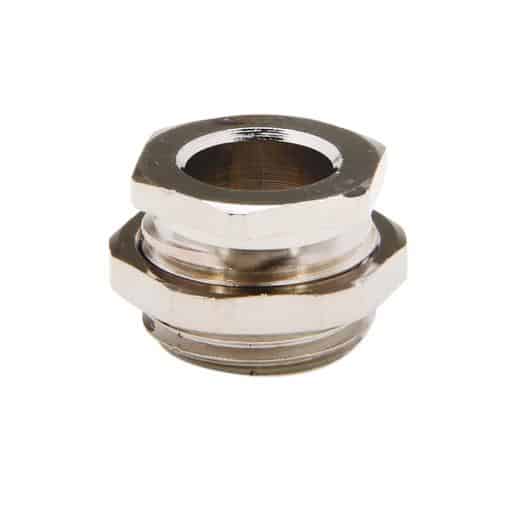
Washer Problems
The second-most common cause of a leaking shower faucet lies in the washer. Its job is to provide a watertight seal to prevent leaks. Therefore, if there’s constant dripping, there’s a high possibility that the washer has been worn out or damaged.
However, the issue doesn’t stop there. When the rubber or metal piece is not correctly installed or in the incorrect size, leaks will also occur. In addition, some washers are more prone to damage simply because they are not of high quality.
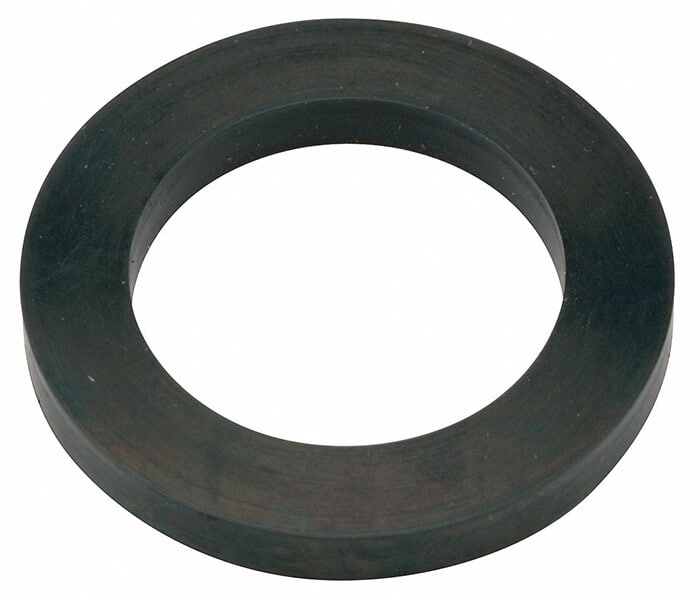
Faulty O-Ring
Located inside the faucet, an O-ring is a small disc responsible for holding the handle in place. Like the washer, it can wear out gradually, causing leaks around the handle area.
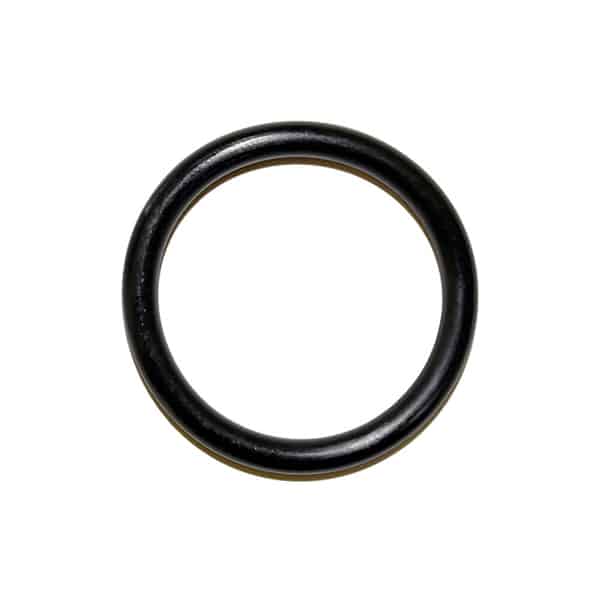
Corroded Valve Seat
A valve seat connects the spout with the faucet. Thus, if you notice water leaking from either part, there must be something wrong with the valve seat, and the issue is mainly caused by mineral buildup.
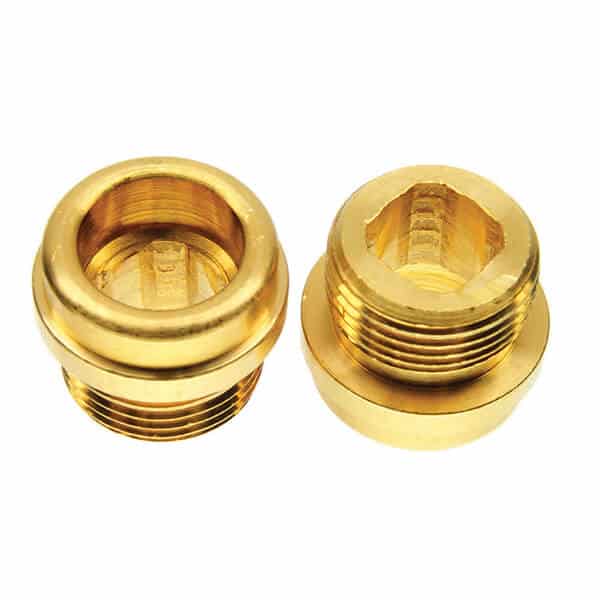
Water Pressure Issues
Sometimes, a leaky shower faucet signals a more significant problem, such as one that relates to the water pressure. In this case, you had better have a professional plumber check the piping system.
Broken Or Loose Parts
Nothing stays the same forever, and neither do these hardware components. Over time, they will be loosened or, worse, damaged by hard water buildup. The problem can be fixed by replacing matching parts.
Resolve A Leaky Shower Faucet, Step By Step
It’s indeed not fun to put up with the continuous dripping sound; rest assured. Therefore, you had better begin the work and put this problem to bed as soon as possible. Below is the general guide on how to repair a shower faucet that won’t stop leaking.
General Guide
This guide applies to most shower faucet models on the market, so it will likely work with your shower faucet.
Tools Required
- Screwdriver or Allen wrench
- Pliers
- Wrench or cartridge puller
- New cartridge
Process
Step 1: Deactivate the water supply.
Step 2: Remove the handle with an Allen wrench. For handles that come with a cap, pry it off and unscrew the screw beneath.
Step 3: Separate the faceplate from the wall by removing the two screws.
Step 4: Most shower valves have a clip to keep the cartridge in place. Carefully lift it out if you see one.
Step 5: Extract the cartridge with a wrench. Some cartridges must be pulled out using a cartridge puller, a specialized tool for this job.
Step 6: Inspect other parts and replace if needed. Reassemble the parts and check your work.
In-Depth Guide
To speed up the process, I’ve categorized the types of shower faucets into two classes. The first class will be a general guide, while the second one will show you how to repair three types of shower faucets manufactured by Delta, Moen, and Pfister.
According To The Number Of Handles
In this section, you’ll be dealing with two types of handles: the single and the two-handle shower faucet. Overall, there isn’t a world of difference between their repair procedures.
Single-Handle Faucets
As the name suggests, this faucet comes with only one handle. It is more popular than the two-handle variant since it is more straightforward to install and use. To stop the leaks, all you have to do is replace the old shower valve cartridge.
Tools Required
- Screwdriver
- Pliers
- Cartridge puller (optional)
Process
Step 1: Shut off the water supply.
Step 2: Locate the set screw on the fixture. Unscrew it and remove the handle.
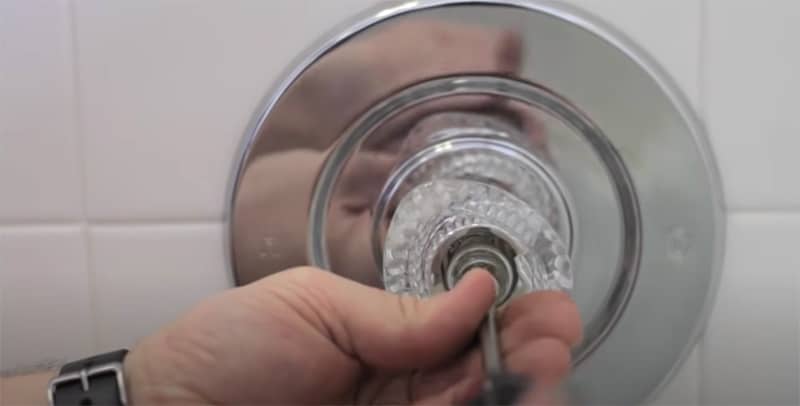
Step 3: Continue removing the two screws that hold the escutcheon plate.
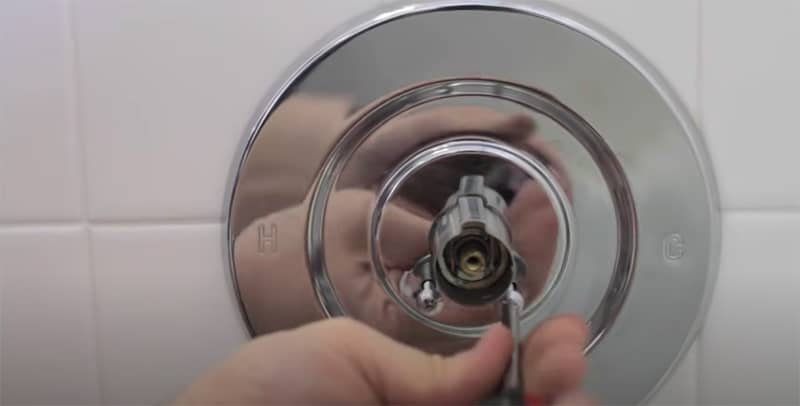
Step 4: You will see a small clip that holds the cartridge in place. Pry it off and keep it somewhere safe.
Step 5: Remove the washer.
Step 6: Pull out the cartridge using pliers. Usually, manufacturers will supply a cap that helps you with this job. Should you lose it, the only solution left is to remove it using a cartridge puller. Make sure to find the one that matches your faucet’s brand.
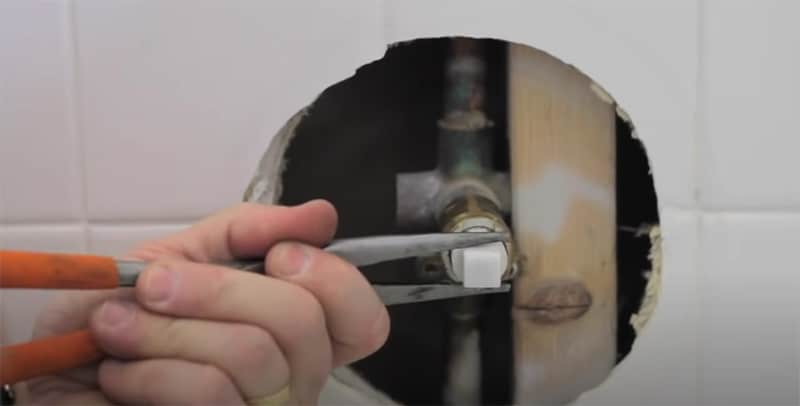
Step 7: Bring the old cartridge to the home improvement store and purchase a new one. It should be the same model.
Step 8: With the new cartridge, reassemble the faucet as you take it apart. Turn on the water supply and check for leaks.
Note: This method works for both the pull-out and turn-around valve.
Watch this video to know more:
Two-Handle Faucets
Also known as a double-handle or stem faucet, a two-handle faucet is a stylish addition to your bathroom. One major benefit of this type of faucet is that when leaks occur to a valve, you still have access to the other with no problem.
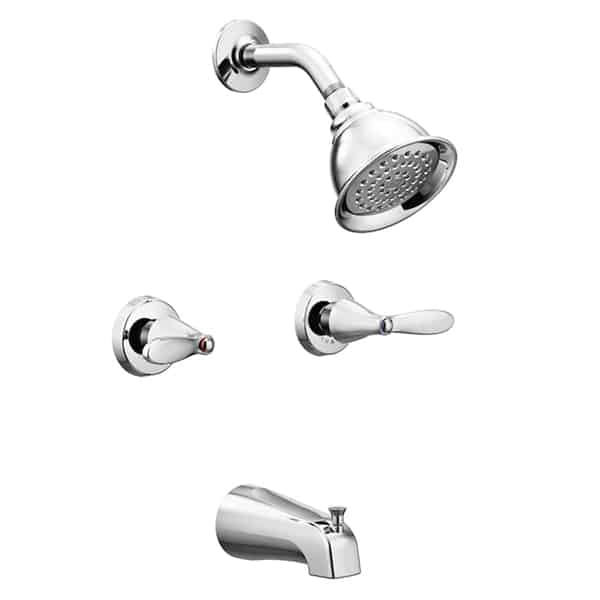
Tools Required
- Screwdriver
- Plumber’s deep socket
- Plumber’s grease
- Petroleum jelly
- Faucet puller (optional)
- Small knife (optional)
Process
Step 1: Similarly, you will begin by turning off the water valve.
Step 2: Remove the decorative cap, exposing the screw underneath. You can extract most caps by turning them, but for embedded ones, you will have to pry them open with a small knife or screwdriver.
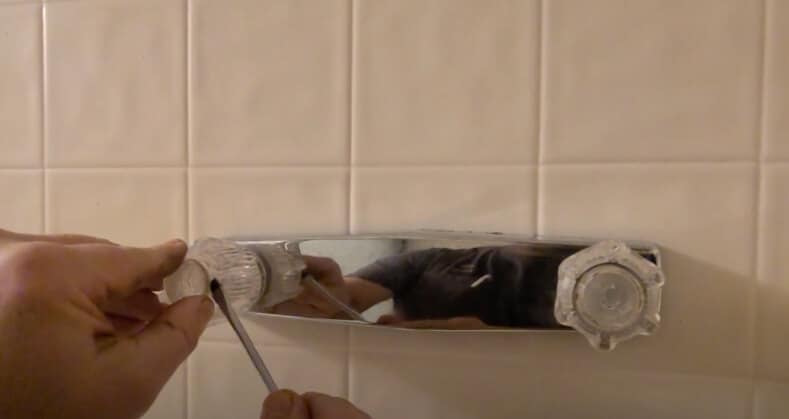
Step 3: Remove the screw and pull out the handle. You will have to wriggle it slightly to get it out. If it’s stuck, turn to a faucet pullet for help.
Step 4: Upon removing the faucet, you will see the stem. In most cases, you can separate the component by turning it counterclockwise. If your hand strength is not enough, you will have to use a plumber’s deep socket.
Note: Grease the nut to make the job easier.
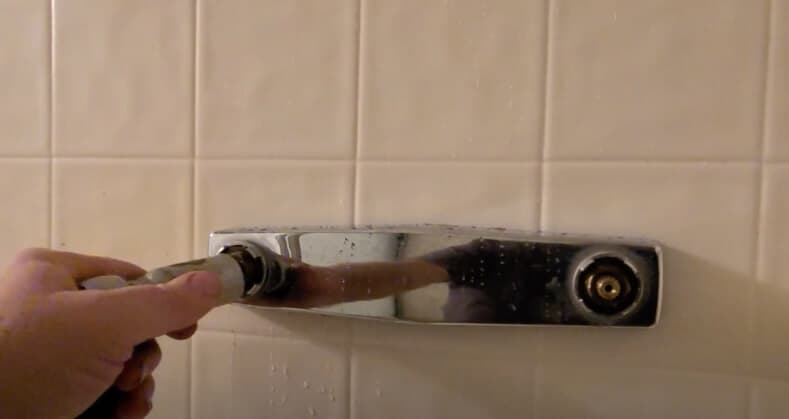
Step 5: Inspect the stem and other parts of it. As mentioned above, the washer is usually the reason why your faucet drips non-stop. If the washer shows visible signs of damage or is worn out, replace it. Lightly coat the new washer with petroleum jelly before reinstalling.
Note: If most parts are damaged, I suggest purchasing a new stem. It does not cost much and is less tricky for you.
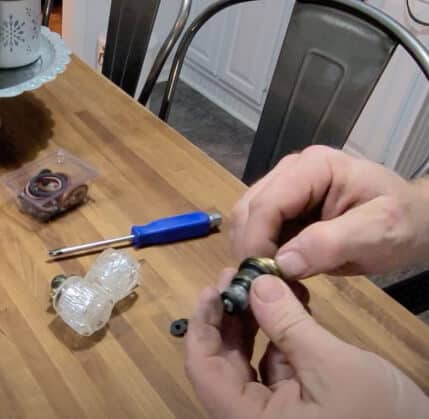
Step 6: Now that you have replaced the washer, it’s time to put everything back into place. You will reinsert the stem, followed by the handle, and finally, the cap. Ensure that everything is tightened so that water won’t come out.
Step 7: Activate the water supply and see whether water still comes out of the faucet. If it does not, you have successfully finished the work!
Watch this video to know more:
According To The Manufacturer
Moving on to this section, I’ll guide you through how to repair leaky shower faucets from Delta, Moen, and Pfister. Note that the solution will apply to most models but not all.
If your warranty is still valid, your best option is to contact customer service to have the faucet repaired.
And how do you know what brand of shower faucet you are using? Peek at the symbol written on the plate behind the handle. If it’s an M, the faucet is a product from Moen. If it’s Delta or Pfister, you will see the full name on it.
Delta Faucets
Most Delta shower valves are relatively straightforward to remove, so you should not be worried. A screwdriver and an Allen wrench are only what you need – yes, no joke!
Tools Required
- Screwdriver or Allen wrench
- New cartridge
Process
Step 1: Pry the cap off and remove the knob or handle by turning the screw using a screwdriver or an Allen wrench, respectively.
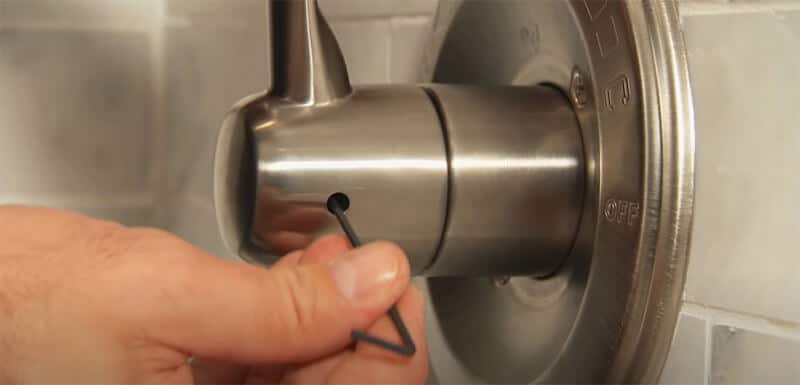
Step 2: The plate is fixed to the wall by two screws. Unscrew them and take the plate out.
Step 3: Remove the sleeve by hand and the brass bonnet with a pair of pliers, turning it counterclockwise. Pulling it out by hand is also possible.
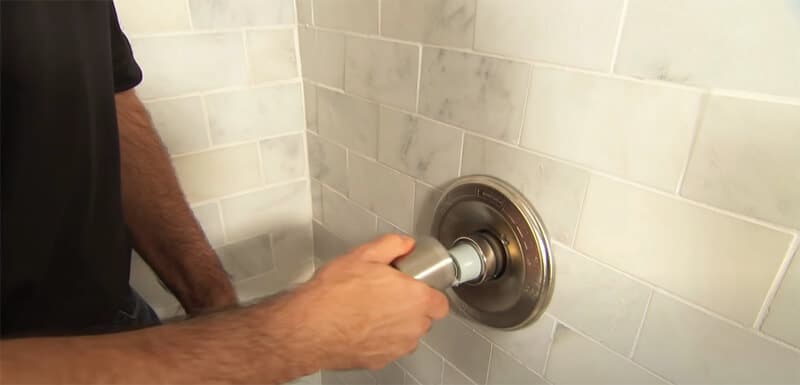
Step 4: Extract the cartridge. Suppose it refuses to come out, wiggle until it starts to loosen.
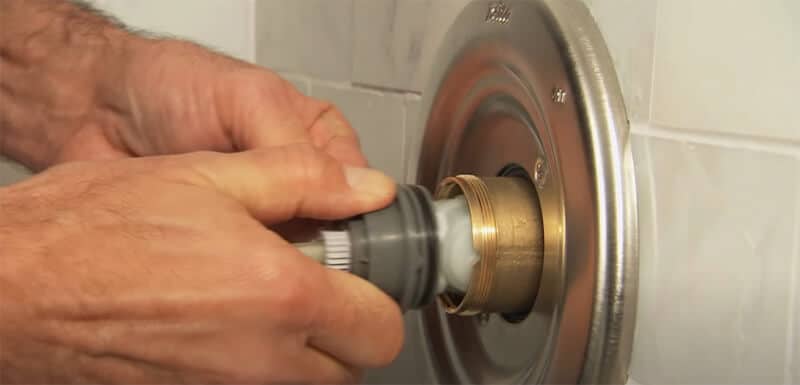
Step 5: Stop by the nearest hardware store and purchase a new cartridge. It should be the same model as the old one.
Step 6: Insert the new cartridge. Ensure that its rotational limit is adjusted as stated by the instructions.
Step 7: Return everything to its original position. Start with the brass bonnet, followed by the plate, and finally the outside sleeve. Remember that everything has to be tightened. Otherwise, you’ll be dealing with leaks again shortly.
Step 8: Open the water valve and check whether everything’s back to normal. I’m sure that there are no more leaks by now.
Watch this video to know more:
Moen Faucets
Overall, removing a Moen cartridge is challenging for beginners, especially if you don’t have the right tool. Don’t fret – you just need a little patience to pull this off.
Tools Required
- Screwdriver or Allen wrench
- Pliers
- New cartridge
- Removal tool (usually included with the new cartridge)
Process
Step 1: Again, turn off the water supply before getting started.
Step 2: Remove the cap to uncover a screw underneath. Unscrew it to extract the handle or the knob. If it’s the handle type, unscrew by an Allen wrench.
Step 3: Pull the stop tube out.
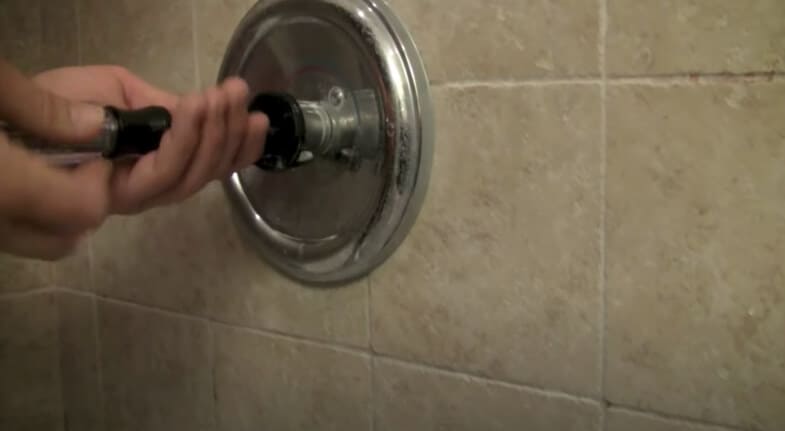
Step 4: Continue unscrewing the two screws of the escutcheon plate.
Step 5: At this stage, you should see a small retainer clip. Its job is to prevent the cartridge from popping out of the hole when the water pressure increases. To remove the clip, use a pair of pliers and carefully pull it out.
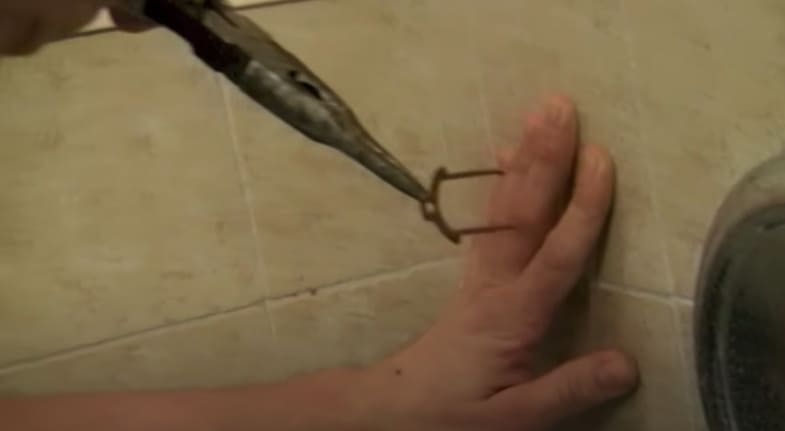
Step 5: Pull the cartridge out carefully using pliers. If it resists, wiggle it.
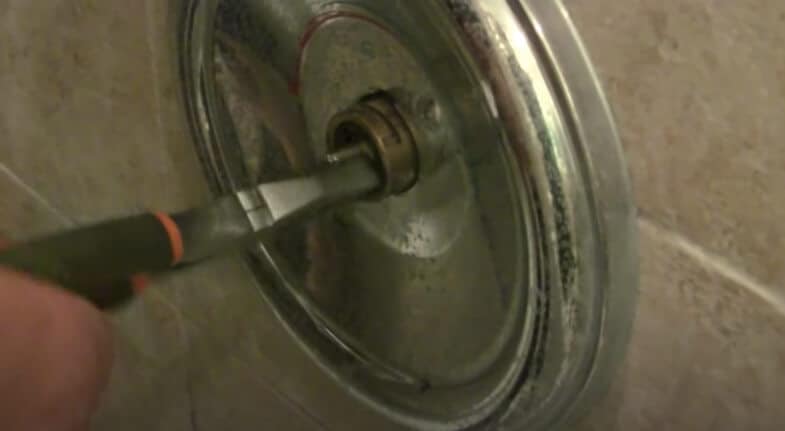
When you purchase the new cartridge, the package will include a special tool made of white plastic. Slide the tool into the shaft until it secures a connection with the cartridge. Separate the cartridge slowly, turning the part back and forth until it is released.
Note: You can buy this tool as a separate part, and it can be made of metal as well.
Step 6: Install the new cartridge into the hole using the same plastic tool. Slide the retainer clip back to its place. If it doesn’t seem to fit, there’s a high chance that the cartridge is not seated as it should. Adjust with the tool until everything’s in harmony.
Step 7: Reinstall the faucet in reverse order. Every part should be adequately tightened, but not too tight.
Step 8: Test your work. If there’s no more water coming out of the faucet, congratulations!
Watch this video to know more:
Pfister Faucets
Fixing a leaky Price Pfister (now Pfister) faucet is no daunting task. I’ll show you how to do it right now!
Tools Required
- Screwdriver or Allen wrench
- New cartridge
Process
Step 1: Don’t forget to deactivate the water supply first.
Step 2: Most Pfister faucet handles can be removed by hand with ease. You can twist the handle in an anticlockwise motion, and it will come off in no time. Some feature a screw at the bottom of or underneath the handle. Loosen it with an Allen wrench.
If it’s the knob variant, extract the plastic cap and unscrew the screw in the middle.
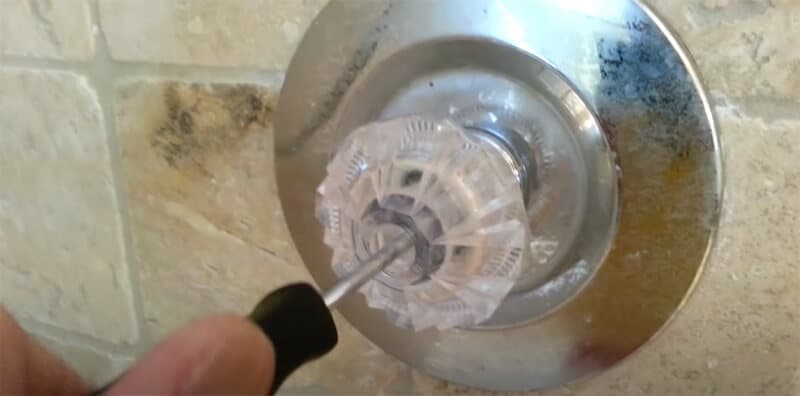
Step 3: Similar to other types of faucets, you will remove the plate next also by turning the screws counterclockwise. Continue unscrewing the sleeve.
Step 4: The cartridge is retained by a flange with four screws. Unscrew them, and pull the cartridge out.
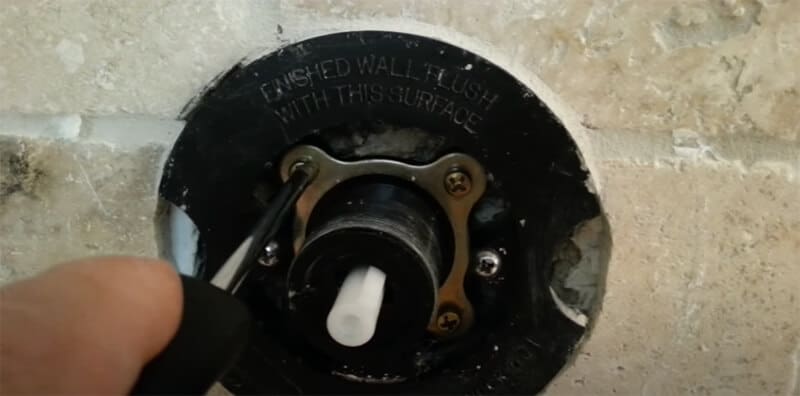
Step 5: Bring in the new cartridge and fasten the flange.
Step 6: Turn on the water valve. Are there still leaks coming out of the faucet? If not, you have made it!
Watch this video to know more:
Advice On Fixing A Leaky Shower Faucet
You will wish that you know these practical pieces of advice sooner! Yet, it’s not too late now. Keep reading and be amazed!
- Optimize your time: Since the main water is shut off while you’re repairing the faucet, it’s essential that you keep all the tools and instructions nearby to save time. Check the manual guide and buy all the replacement parts beforehand.
- Avoid losing the components: You don’t want any component to fall down the drain as you’re working. Cover it with a cloth rag. Plus, keep the small parts in a container until you put them back.
- Use heat for stuck parts: you can blow a hairdryer on high if any parts refuse to come off. Lubricants like WD-40 will also work.
- Inspect the leak source: For two-handle faucets, you will need to determine which faucet is leaking. Is the leaking water hot or cold? Feel it, and you will have the answer.
- Leave the damaged parts: Mainly, the culprit of a leaky faucet lies in the cartridge. However, if the cartridge is still in good shape or has just been replaced recently, you will need to inspect and replace other elements if they appear to be faulty.
- Prevent future leaks: It’s vital to fasten all the parts. I’m sure that you don’t want to deal with these leaks any longer, do you?
Sometimes, the cartridge is not entirely to blame. If you have strictly follow my guide but the faucet still leaks, you may want to try these tricks:
- Clean your showerhead with vinegar and an old brush
- Replace the washer in the showerhead
- Inspect the diverter valve
FAQs
You’ve got questions, and I’ve got the answers – no matter how tricky they are. Don’t skip the next section if you are still pretty much confused with how to repair your shower faucet.
Act Fast Or It Gets Worse
Well, that’s all you have got to know about how to fix a leaky shower faucet, my friend. With clear instructions and illustrations provided, I’m optimistic that you can do it right away. The quicker you resolve the issue, the less trouble you will face.
Besides the high water bills, a leaky faucet will also result in rust stains. When the drip goes on for months, your bathroom fixtures are sure to suffer from wear and tear. Additionally, you’ll be exposed to other hygiene-related risks, such as mold or mildew.
Therefore, it’s important to take prompt action when you have a leaky faucet. Assuming that you have further questions, feel free to state your problems in the comment section, and I’ll respond as quickly as possible. Have a nice day!
